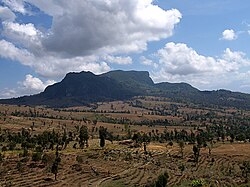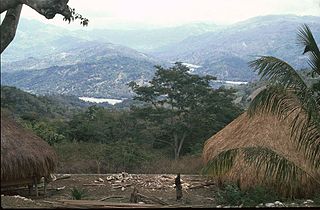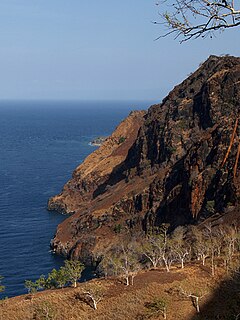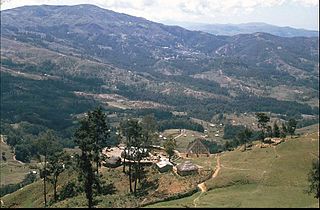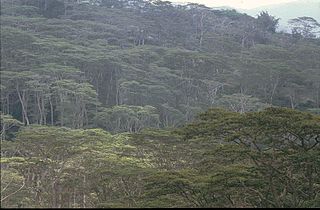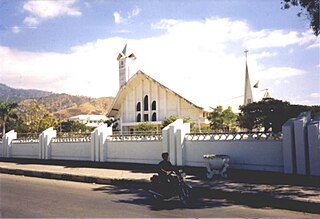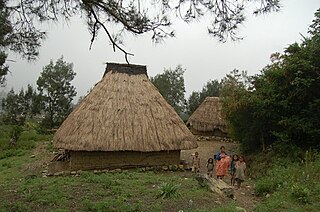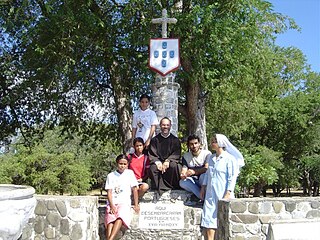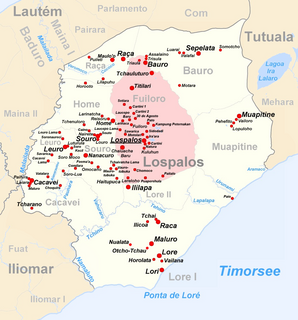This article may be expanded with text translated from the corresponding article in German. (July 2011)Click [show] for important translation instructions.
|
This article needs additional citations for verification .(February 2017) (Learn how and when to remove this template message) |
| Viqueque Vikeke | ||
|---|---|---|
| District | ||
Rice fields in Viqueque | ||
| ||
 Map of East Timor highlighting Viqueque District | ||
| Coordinates: 8°47′S126°22′E / 8.783°S 126.367°E Coordinates: 8°47′S126°22′E / 8.783°S 126.367°E | ||
| Country | ||
| Capital | Viqueque | |
| Subdistricts | Lacluta, Ossu, Uato-Lari, Uato Carabau, Viqueque | |
| Area | ||
| • Total | 1,877 km2 (725 sq mi) | |
| Area rank | 1st | |
| Population (2015 census) | ||
| • Total | 73,033 | |
| • Rank | 5th | |
| • Density | 39/km2 (100/sq mi) | |
| • Density rank | 10th | |
| Households (2015 census) | ||
| • Total | 15,297 | |
| • Rank | 5th | |
| Time zone | TLT (UTC+09:00) | |
| ISO 3166 code | TL-VI | |
Viqueque (Tetum : Vikeke) is the largest of the districts of East Timor. It has a population of 77,402 (Census 2010) and an area of 1,877 km². [1] The capital of the district is also named Viqueque. The subdistricts are Lacluta, [2] Ossu, Uato-Lari (which was known in Portuguese Timor as Leça, and, in Tetum, is spelled Watulari), Uato Carabau (spelled Watucarbau, in Tetum) and Viqueque. The district was the same in colonial times.

Tetum (Portuguese), Tetun, is an Austronesian language spoken on the island of Timor. It is spoken in Belu Regency in Indonesian West Timor, and across the border in East Timor, where it is one of the two official languages. In East Timor Tetun Dili, or Tetun Prasa, is widely spoken fluently as a second language; without previous contact, the Tetum dialects and Tetun Dili are not immediately mutually intelligible, mainly because of the large number of Portuguese origin words used in Tetun Dili. Besides some grammatical simplification, Tetun Dili has been greatly influenced by the vocabulary and to a small extent by the grammar of Portuguese, the other official language of East Timor.
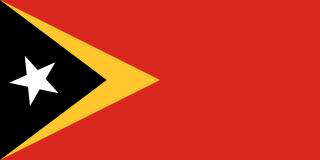
East Timor or Timor-Leste, officially the Democratic Republic of Timor-Leste, is a country in Maritime Southeast Asia. It comprises the eastern half of the island of Timor, the nearby islands of Atauro and Jaco, and Oecusse, an exclave on the northwestern side of the island surrounded by Indonesian West Timor. Australia is the country's southern neighbour, separated by the Timor Sea. The country's size is about 15,410 km2.

Viqueque is a city in the south-east of East Timor, 183 km from Dili, the national capital. Viqueque is the capital of Viqueque District and Viqueque Subdistrict, in the eastern part of the country with five subdistricts under its control, they are: Uatu-Lari, Uatu-Carbau, Viqueque, Lacluta and Ossu. The city has a population of 6,859 (2015), the subdistrict has 20,640 (2004), the district 65,245 inhabitants (2004).
Viqueque is on the south coast of Timor, on the Timor Sea. It borders the districts Baucau to the north, Lautém to the east, and Manatuto to the west.

Timor is an island at the southern end of Maritime Southeast Asia, north of the Timor Sea. The island is divided between the sovereign states of East Timor on the eastern part and Indonesia on the western part. The Indonesian part, also known as West Timor, constitutes part of the province of East Nusa Tenggara. Within West Timor lies an exclave of East Timor called Oecusse District. The island covers an area of 30,777 square kilometres. The name is a variant of timur, Malay for "east"; it is so called because it lies at the eastern end of the Lesser Sunda Islands. Mainland Australia is less than 500 km away, separated by the mentioned Timor Sea.

The Timor Sea is a relatively shallow sea bounded to the north by the island of Timor, to the east by the Arafura Sea, to the south by Australia.
Viqueque is a homeland of the Malayo-Polynesian language Tetum. In East Timor it is co-official with Portuguese. In the east part of the district live speakers of the Papuan language Makasae.
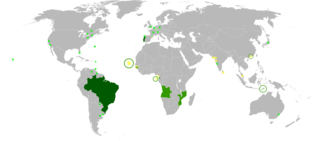
Portuguese is a Western Romance language originating in the Iberian Peninsula. It is the sole official language of Portugal, Brazil, Cape Verde, Guinea-Bissau, Mozambique, Angola, and São Tomé and Príncipe. It also has co-official language status in East Timor, Equatorial Guinea and Macau in China. As the result of expansion during colonial times, a cultural presence of Portuguese and Portuguese creole speakers are also found in Goa, Daman and Diu in India; in Batticaloa on the east coast of Sri Lanka; in the Indonesian island of Flores; in the Malacca state of Malaysia; and the ABC islands in the Caribbean where Papiamento is spoken, while Cape Verdean Creole is the most widely spoken Portuguese-based Creole. Reintegrationists maintain that Galician is not a separate language, but a dialect of Portuguese. A Portuguese-speaking person or nation is referred to as "Lusophone" (Lusófono).
On the south coast, the people report both myths and possible occurrences of crocodiles.
 | 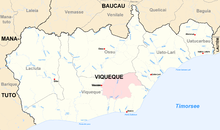 |
